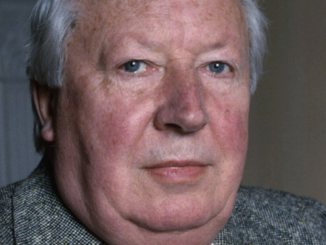The land ends
Lands End is a headland and holiday complex in western Cornwall. It is the most westerly point of mainland Cornwall and England, and is situated within the Penwith peninsula about eight miles west-southwest of Penzance, at the end of the A30. To the east is the English Channel, to the north the Celtic Sea and to the west the Atlantic Ocean.
Lands End is a popular tourist attraction, known for its unique rock formations and cliffs, and the iconic signpost that marks the start/end of the UK, offering a ‘last and first’ photo opportunity. The area is steeped in folklore and mythology, with tales of mermaids and Arthurian legends adding to its charm. It’s also famous for its breathtaking sunsets and views across the Atlantic.
Although used as a starting point for countless end-to-end British mainland adventures, Lands End is neither the southernmost nor westernmost part of Britain. The southernmost point on the island of Great Britain is Cornwall’s Lizard Point. The westernmost is Scotland’s Ardnamurchan Point which lies at the tip of the Ardnamurchan Peninsula – in among Muck, Eigg and Rum in the Highland region of Scotland.
Likewise, John O’Groats is neither the northernmost (nearby Dunnet Head) nor the easternmost (East Suffolk’s Lowestoft Ness) extreem.
The pair of them are significant in that the length of the kingdom sits between them. In doing so, Lands End provides a fitting end for my grandparents’ 1947 summer holiday West Country road trip. Especially as it began 468 road miles away on the Scottish border.

© Always Worth Saying 2023, Going Postal
Inspiration
As well as inspiring the traveller and reviewer of old photographs, Lands End has inspired the writer and artist. A significant location in literature, Lands End and the surrounding Cornish coast symbolise the edge of the known world or a journey’s end. Its rugged beauty, dramatic cliffs, and ocean views have inspired many authors.
Virginia Woolf’s novel “To The Lighthouse” is set in the Hebrides, although her descriptions of the sea and the lighthouse are believed to be inspired by her childhood holidays in Cornwall, near Lands End.
While Lands End is not directly referenced, the atmospheric Cornish landscape that Daphne du Maurier famously evokes in her novels like “Jamaica Inn” and “Rebecca” includes the wild, wind-swept beauty of places like Lands End.
The phrase “Lands End to John o’ Groats” itself has been the subject of many travelogues and adventure stories.
Rosamunde Pilcher is known for her novels’ Cornish settings which often describe the stunning scenery around Lands End. Likewise, Mary Wesley’s “Camomile Lawn”.
Lands End has been a popular subject for the visual arts due to its unique landscape and the rugged beauty of its cliffs. Many artists have been drawn to the area, capturing its picturesque views in a variety of mediums.
The iconic headland has been portrayed in numerous oil paintings, watercolours and sketches. Landscape artists such as J.M.W. Turner and Samuel Palmer have immortalized Lands End in their works, creating breathtaking depictions of the area’s natural beauty, dramatic weather, and changing light conditions.
Photographers have also been captivated, producing stunning images of the area’s distinctive rock formations, crashing waves, and panoramic views.
The area’s rich history and mythology also inspire, with some artists incorporating elements of local folklore and legends into their works.
In contemporary art, Lands End has been represented in abstract and conceptual pieces. Some artists use the location as a metaphor for themes such as the passage of time, the edge of the world, or the end of a journey. Others use the landscape as a backdrop for exploring environmental issues.
Whether it’s a traditional landscape painting, an atmospheric photograph, or a thought-provoking installation, works of art featuring Lands End continue to captivate audiences with their evocative portrayals of this remarkable location.

Ships in distress off the Lands End. Cornwall,
W Melby – Public domain
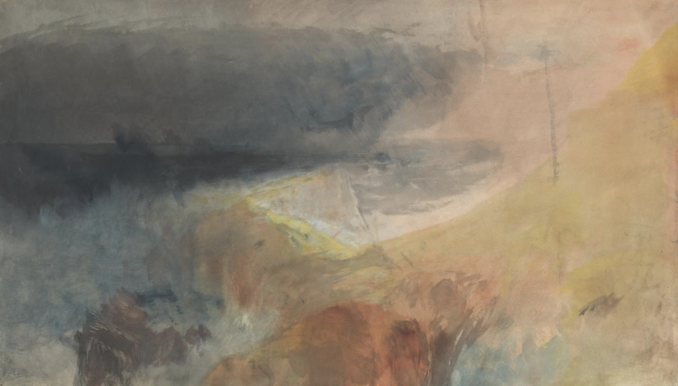
Lands End, Cornwall,
JWM Turner – Public domain CC BY-SA 3.0
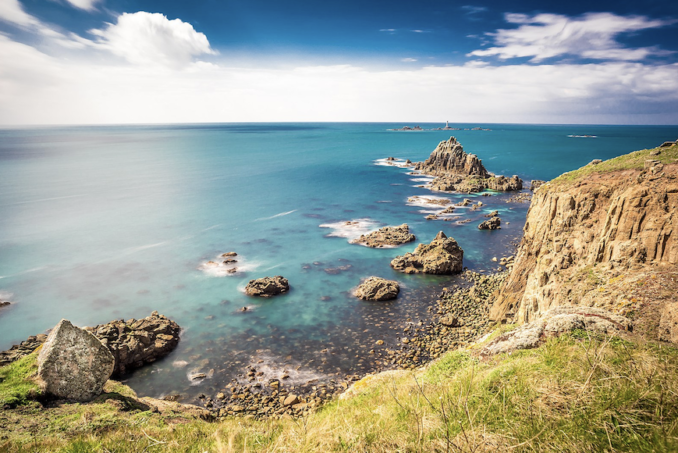
Lands End Cornwall United Kingdom,
Guiseppe Milo – Licence CC BY-SA 2.0
The Lands End tragedy
Mention of the rugged and remote reminds us towards tragedy. The Lands End tragedy refers to a heart-wrenching incident that occurred during a school outing to Lands End in 1985, when four children from Stoke Poges Middle School lost their lives. They were playing unsupervised at the foot of potentially dangerous cliffs and were swept out to sea by a large wave. The incident sparked outrage among parents, who blamed the headmaster for leading the school party to an unsafe area without proper instructions or supervision.
It was a tragedy that left a lasting impact on the community, particularly among the children from Sennen primary school who contributed to the BBC’s Domesday project in the mid-1980s.
National treasure?
Despite being a national treasure, Lands End is privately owned. A Cornish family owned it until 1982 when it was sold to Mr David Goldstone. Five years later, Mr Goldstone sold in turn to colourful shipping, property and oil millionaire (and one-time chairman of Millwall FC) Mr Peter de Savory for £7,000,0000. The Charterhouse old boy and son of a French-born Essex landowner having outbid the National Trust.
Unpopular with the locals (yokels?), Mr De Savory turned the area into a kind of theme park. Sold again to businessman Graham Ferguson Lacey in 1991, the current owners are Heritage Britain plc. These days ‘attractions’ at the theme park include children’s playgrounds and a weekly fireworks spectacular narrated by Puffin’s favourite Miriam Margolyes.
One and a half miles from the theme park and warning shipping of the approaching coast sits Longships lighthouse, visible in the distance in Guiseppe Milo’s above photograph.
The initial lighthouse was built in 1795, designed by Samuel Wyatt, and featured a round granite tower. The present lighthouse, constructed in 1869, is equipped with a first-order fixed catadioptric optic, a fog signal, and a helipad on top. Automation of the lighthouse occurred in 1988. The operation and remote monitoring of the lighthouse are conducted by Trinity House from Harwich, Essex.
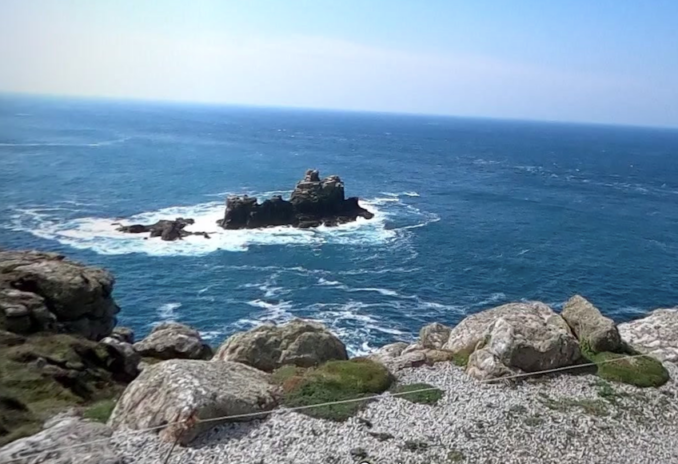
© Google Street View 2023, Google.com
In the modern day we can stand at the exact spot via the miracle of Street View but where my grandfather is standing is roped off and signposted ‘Dangerous.’ You can have a look around via this link.
Reflections on 1947
Given we have reached the end of my grandparents’ 1947 road trip and given we have travelled the entire length of England, we must pause to reflect.
The previous winter, 46/47 had been particularly harsh. It brought severe cold spells and snowstorms that lasted for six weeks. Snowdrifts reached up to 20 feet in depth. Disruption was severe. Thousands of people were cut off. Industries were halted and there was a fear of a food shortage. Beyond the winter months, post-war austerity and rationing continued. Better times lay ahead. Or did they?
The coal industry was nationalised on January 1st 1947. A mixed blessing. Likewise the nationalisation of the railways on January 1st 1948 and the creation of the National Health Service the following July.
In March 1947, the Ormonde docked in Liverpool bringing migrant workers from Bermuda, Jamaica and Trinidad and Tobago. At the end of that year, the Almanzora arrived at Southampton with a similar cargo. The following year, the much-heralded Empire Windrush docked in Harwich.
During their long road journey, my grandparents will not have seen a coloured face let alone passed a mosque.
Furthermore, 1947 was a year of geopolitical change as the British mandate over Palestine came to an end. The UK transferred the Palestine issue to the UN, leading to a proposed partition of Palestine into two independent states, which subsequently led to the 1948 war and significant shifts in the Middle Eastern political landscape. This period was also characterized by substantial Jewish immigration from Eastern Europe and growing demands for independence from the Arab population.
As my parents drove the length of the county they will have passed a war memorial in every habitation no matter how modest. The idea that such memorials might one day be vandalised and Armistice and Remembrance Days might be disrespected would be unthinkable.
Nearly eight decades later perhaps we approach our own land’s end.
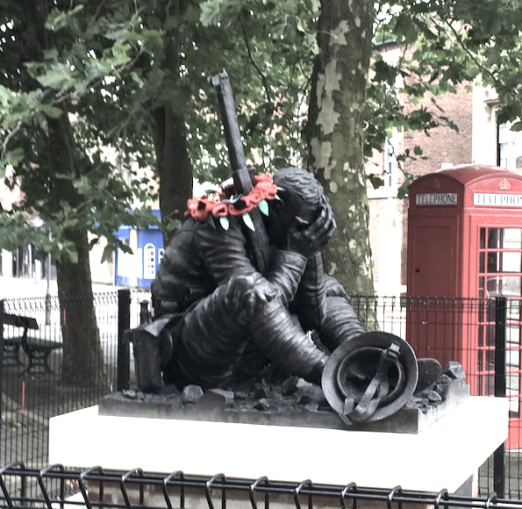
Birkenhead Institute War Memorial,
Paro7181 – Licence CC BY-SA 2.0
© Always Worth Saying 2023


